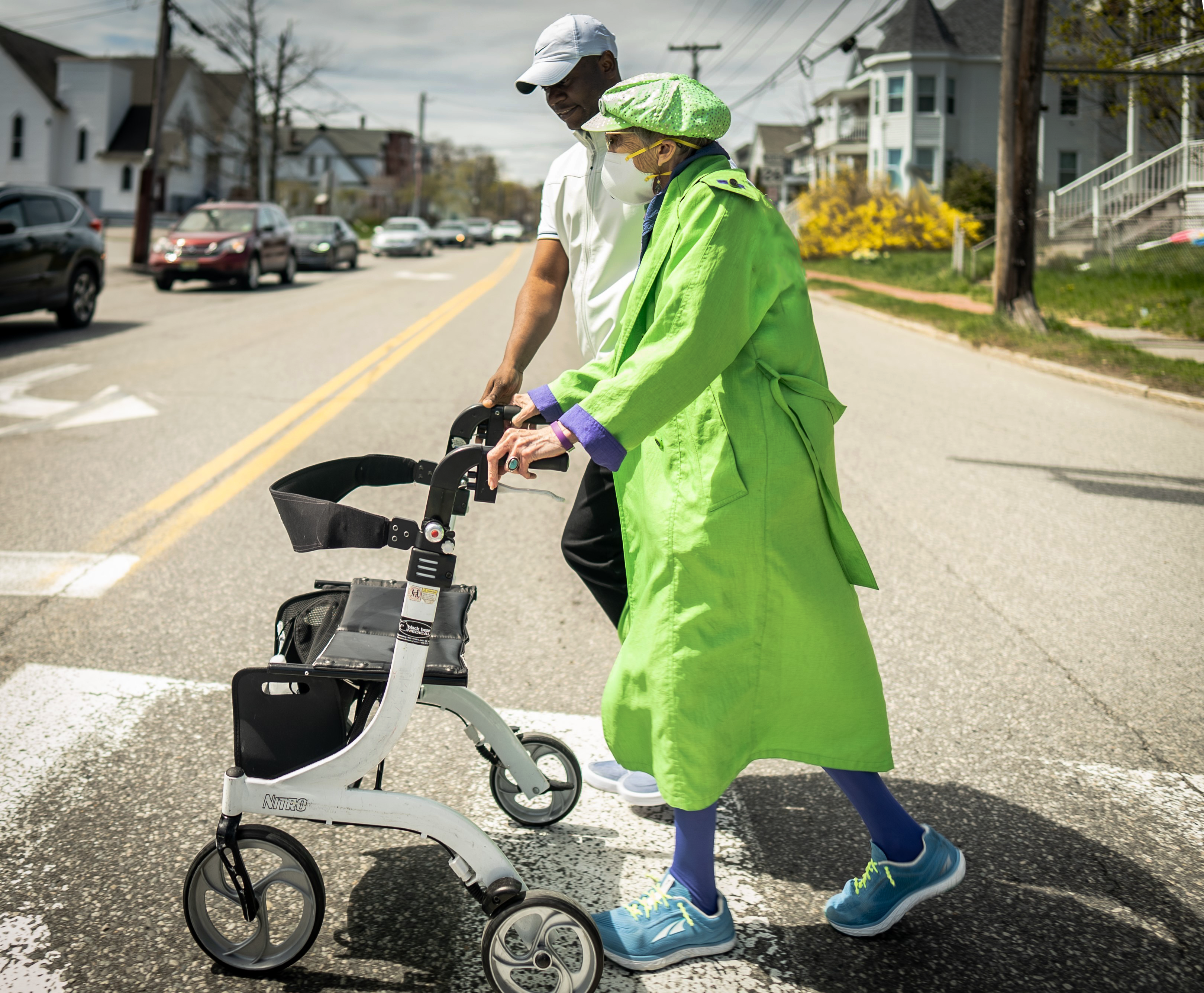There are 53 million caregivers in the United States who are providing, on average, 24 hours a week of support for their loved ones[1]. NADTC’s most recent online course focused on the important role caregivers have in managing transportation, including the indirect impacts that transportation, or lack thereof, can have on caregivers and the importance of including caregiver voices in shaping community transportation options and support. In addition to speaker presentations, the course included a discussion forum for participants to connect with one another. The following represents a sampling of the ideas and conversation generated by the speakers and participants.

Photo Credit: Moving Maine Network – Greater Portland Council of Governments, Portland, ME
- Family caregivers may not always identify as “caregivers”: For programs that offer caregiver respite services, which may include transportation support, using the word “caregiver” in marketing material may not reach the people who need the information the most. An individual may see supportive services and think, “I’m not a caregiver. I am their (spouse, daughter…)”. Instead, it would be better to describe the activity for which support is offered: “Do you drive your loved one to the doctor?” This language shift allows campaign materials, messages, and activities to better reach a wide caregiving audience.
- Understanding the burdens of caregiving is a necessary step for developing responsive transportation supports: It is important for transportation providers to acknowledge the invisible labor and internal barriers caregivers must overcome to use and accept transportation services, such as feeling too tired or overwhelmed to arrange outside transportation, not knowing the services available, or uncertainty whether or not a provider is sufficiently trained and is able to provide the specialized assistance your loved one needs. Offering long-distance travel or door-through-door assistance, financial assistance or subsidies to pay for rides, or having a Mobility Manager available who gives individualized help to find the best option to meet the needs of the caregiver and their loved ones can alleviate many of these concerns.
- Educating transportation providers on Dementia Friendliness improves the overall experience for everyone: For caregivers, navigating community transportation options that meet the needs of individuals with dementia can present unique challenges. Individuals with dementia may be intimidated and overwhelmed by transportation. Offering education to providers on the challenges that individuals with dementia face, such as forgetting to or having difficulty paying the fare, repeating the same question, or struggling with following directions, could be helpful. Speaking clearly, simplifying instructions, slowing down speech, and pausing to ask one question at a time can have an extremely positive impact on an individual’s transportation experience and safe riding.
- Transportation providers should prioritize diversity initiatives to support caregivers: It is extraordinarily important to seek out diverse and marginalized caregivers in order to better understand their unique needs. Listening sessions, surveys, focus groups, as well as participation in community events are effective approaches for identifying specific needs and identifying targeted programs and services that better serve the needs of specific communities.(For more information on the NADTC Diversity, Equity and Inclusion Initiative, please visit: https://www.nadtc.org/diversity-equity-inclusion-initiative/)
- The burdens of caregiving in rural communities are often defined by transportation challenges: From road conditions, to scheduling and wait times, to far distances for specialized medical care, transportation challenges seem to weave their way into the daily routine of caregiving in rural areas. Conversations around caregiving, transportation barriers, and health in rural communities are vital to improving community health outcomes, relieving caregiver burdens, and generating solutions to transportation access.
More than anything else, this course emphasized the essential role of caregivers within our society and provided a platform for conversations among transportation and caregiving professionals. NADTC online courses are just one of many ways we are engaging with various stakeholder perspectives on transportation topics for older adults, people with disabilities, and caregivers. For more information on future courses or learning opportunities, visit our Training and Events page at https://www.nadtc.org/training-webinars/category/training-webinars/.
NADTC would like to extend a heartfelt thank you to our course speakers who shared their time and expertise with us to create this learning opportunity:
- Jane Mahoney, Training & Technical Assistance Specialist with Easterseals, Inc. and NADTC
- Melissa Gray, Assistant Director of Transportation at USAging and NADTC
- Cori Marsh, Aging Unit Supervisor with the Aging and Disability Resource Center of Rock County, Janesville, WI
- Sarah Cheney, Executive Director, Shepherd’s Centers of America
[1] https://www.caregiving.org/wp-content/uploads/2021/01/full-report-caregiving-in-the-united-states-01-21.pdf
Leave a Reply